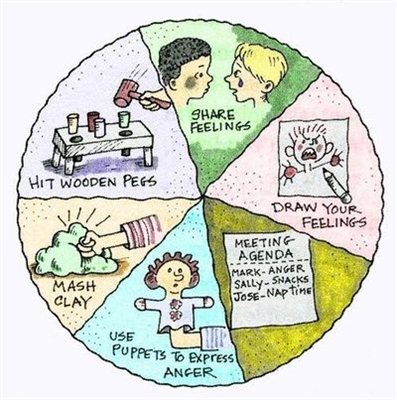While we are not thinking, it seems to us that we are thinking with the participation of our own voice and in the same tone that we communicate in life.
In practice, it turns out that thoughts in our head are transformed from one to another almost silently.
But this does not prevent a person from speaking coherently and in the case if he is a thinking and healthy subject.
What is external speech?

It's all ethereal erupted by our mouth into space to attract the attention of another individual or to express one’s own emotions that overwhelm the mind of indignant
That is, unfortunately, periodically or systematically distributed here and there obscene speech, it is also an external speech.
If it is no joke, then this ability acquired by us in the process of evolution using sound signals to transmit information due to the work of the muscles of the mouth, tongue and a couple of internal organs for the sake of familiarization with someone.
Kinds
The scientific understanding of external speech includes two classifications:
- Oral speech. Figuratively speaking, this is the process of pronouncing sounds in a certain sequence, thanks to which people around understand in one way or another what we tell them.
We are not able to speak only having appeared on the world, but from a birth are predisposed to mastering this skill.
However, in the presence of certain diseases, we are incapable of transmitting coherent and audible information by others.
- Writing. The presentation of thoughts through the design of signs and symbols also apply to external speech, although with this method of transmitting data the reader’s response comes with some delay. Well, at least it was so until the epoch of the emergence of open access to the Internet, which allows you to communicate without opening your mouth and see an almost instantaneous reaction to written statements.

Oral speech can proceed:
- In the form of a dialogue: the person at the time of the pronouncement of some information has one or several interlocutors, listeners, whom he holds in sight.
- In the form of a monologue: the words issued are not addressed to the subject, but to space, to themselves, to a certain community, but to no one specifically.
It should be noted here that the eavesdropping of such a speech does not endow it with the status of a dialogue, since the person who had initially spoken reasoning did not strive to communicate with someone other than himself.
The concept of internal speech

To be honest, this poorly understood phenomenonnecessary for mental operations and is a confirmation of the presence of consciousness in a person.
Roughly speaking it inaudible monologue our brain in response to some kind of stimuli.
In the role of the latter are:
- experienced emotions. The brighter our reaction, the more confused may be the internal monologue;
- information requiring analytical analysis with subsequent conclusions;
- physiological needs;
- contacts with the outside world.
But do not confuse inner speech with voices heard by some people with mental disorder. Internal monologue is a natural and necessary manifestation of our brain activity.
What are its features?
In contrast to speaking out loud, especially during a dialogue, the internal monologue is silent, almost never consists of lengthy and consistent proposals. Most often, it includes fragmentary phrases reflecting the essence of some phenomena or thought-out tasks.

Reasoning on their own brief and fragmentaryBecause, in addition to thinking about solutions for the most important individual projects, his brain simultaneously processes other data that is not related to the situation that is “disturbing” at the current moment.
If possible, to voice out loud the internal speech, the final product would consist of fragmentary judgments, reactions to pleasant and unpleasant stimuli, and would be more like the speech of a mentally ill person.
Internal dialogue is not like any other way of talking to our ears. His task plan and regulate our behavior, but understandable only to us the format of teams and tasks.
At the same time, there are no “subjects” in the statements, because the goals are expressed in the images of upcoming actions. Thus, preparatory work is carried out for successful communication with the outside world.
Inner speech:
- Short. If we spoke as fast as we think, then it would hardly have been possible to understand the essence of the spoken word. No wonder they say that thought is fast and instantly takes it to any distance.
- Is fragmented. Therefore, without the skills of communication with others, it is very difficult to convey to the interlocutor your thoughts so that he understands the essence of the audible.
- Phonetic side the inner monologue is scarce.
- The essence is important “Pronountable” and not what it means. How this works is well viewed on the example of monologues expressed by repair specialists, for example, automobiles. A set of 5-7 phrases, in essence, being rude and even obscene utterances, people manage to clearly and efficiently talk about the problem. And even determine the most effective ways to achieve the task.

Opinion Vygodskogo
The scientist has repeatedly said that our inner monologue is the preparatory process of the psyche to communicate man with the world.
As a result of the manipulations hidden from prying eyes inside our brain, essentially nerve impulses, flowing from neuron to neuron, the received information is processed and our response to it is prepared.
In this case, the answer must be understood not only the subsequent statements, but also the formed opinion about something, the attitude to specific things.
Transforming the generated silently into yourself, is not only vocalizationand, in fact, is the process of transforming predicative and idiomatic forms of “utterances” into syntactically divided expressions understandable to others.

While saying aloud, we put thoughts into words, as if giving the latter a material form.
Internal monologues occur on the opposite principle, as if evaporating received information to the state of thoughts.
But the latter are not at all disembodied substance, because they are saturated with words, even if they are transformed into something consisting of pure values.
When a person is healthy, his inner monologue is always dynamic, overflowing with images, some of which may not have any direct relevance to the current moment.
The structure of thought has special structures and its transformation into a word is associated with a number of difficulties. It is not replete with the most understandable formulations.
Therefore, when telling about a beautiful bird seen in a window, I do not keep in mind several separate semantic categories, each of which is tied to the beauty of feathers, the elegant silhouette of a feathered or, for example, the bright color of its beak.
I see it right away in one image, but I tell about him to others with separate sentences, built according to the rules adopted in the Russian language. The transition of thoughts into words well explains the example of a cloud that was resolved by the pouring rain.

But the process of transformation of images into speech is more complicated, because sometimes the meanings of words do not coincide with their essence.
And their desirable line up and quickly enough if there is a need to hold the interlocutor’s attention or seek some desired action from him.
Connection
Before you say something, we mentally "make sketches" topics of the upcoming conversation, we recall the necessary arguments, if we are going to convince someone of something.
And before the beginning of the written work, we work a lot in our minds to determine what we will express and in what style.
What is sober in the mind, then be a good fun of the language. Who is not familiar with this phrase, and who has never been in an awkward situation for this reason?
But we will not consider now the amount of damage brought by the body and our status with a love for the green snake, but we will only get some of the cases when a very drunk person tried to tell someone something.

it an example of how our speech sounded, if mental images did not undergo transformation and were given out to those around us simply in the form of voiced thoughts.
Phrases ending in mid-sentence, the lack of consistency and coherence between individual expressions, the inability to grasp the ultimate goal of speech - we would not be able to quickly understand the essence of the recognizable and draw conclusions.
It is possible that we would not even come out of the caves, because good communication skills help a person to survive and improve their social status.
No less sad would be the picture if our psyche and nervous system, under the guidance of the brain, did not process incoming external data in the way it does in humans now.
Our memory is probably would be overloaded instantly, trying to remember what was stated exactly in exactly the same way as at the moment of its presentation in one or another format.
Thanks to inner speech, we have the opportunity to develop and train the ability to beautifully express our thoughts to others in such a way that they can capture the very essence of our narratives.
And in some cases, even to do what we need, even if it is contrary to the interests of the audience. External perception helps us develop your analytical skills.

For example, Tatyana Vladimirovna Chernigovskaya, a doctor of psychology, states that the more diverse things a person sees and perceives in his life, the better his intellectual abilities in general.
And speech in particular. Since in our body everything is interconnected and the improvement of some qualities “threatens” with pleasant progress in others.
Therefore, the greater the social circle, the more chances we have to improve our analytical skills and communication skills.
And the better we will be able to communicate to those around you, what we really wanted to express with the help of certain words.
Concept, types, functions and theories of speech:



